Flow cytometry
The Flow Cytometry and Sorting facility offers to all research’s groups an efficient and personalized service. The facility provides two cytometers, a FC500 and a Cytoflex, and three cell sorters, a MoFlo XDP, a FACS Aria III and a FACS Celesta.
For more information please contact: dr. Chiara Frasson c.frasson@irpcds.org
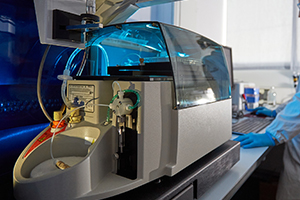
Bioinformatics
The Bioinformatics unit supports the research community’s needs at the Istituto di Ricerca Pediatrica with a variety of services ranging from the planning of genomic experiments to high-throughput data analysis and interpretation using and developing computational methods.
For more information please contact: dr. Carlo Zanon c.zanon@irpcds.org
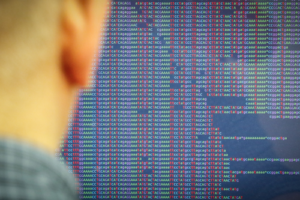
3D Bioprintring
The 3D bioprinting facility is composed of the CellInk BioX bioprinter, a complete standalone system that gives users great flexibility with exchangeable printheads and features. The BIOX is capable of fabricating constructs containing any type of cells, enabling the fabrication of any tissue target.
For more information please contact: dr. Martina Piccoli m.piccoli@irpcds.org
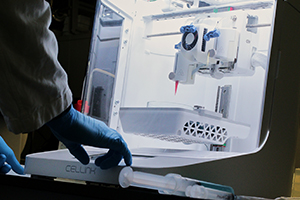
Microscopy
The Microscopy facility is equipped with the last generation ZEISS LSM 800 confocal microscope, with Airyscan technology for super resolution imaging. There are also three other fluorescence microscopes including the newest ZEISS Axio Observer with LED technology provided with a CO2 incubator for live imaging experiments.
For more information please contact: dr. Fabio Munari fabio.munari@gmail.com
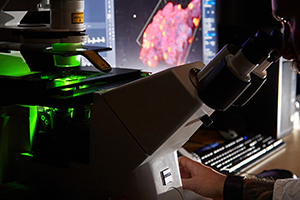
Single cell analysis
The Single Cell facility is equipped with all the instruments needed for the single cell mRNA libraries preparation workflow, including: the new instrument BD Rhapsody, consisting of two Express modules for the capture and barcoding of single cells, together with a scanner for the viability and quality check; two thermal cycler for the synthesis of the mRNA libraries; two instruments for quantification and quality control of the libraries. Moreover, BD gives to the users of the facility free access to the platform Seven Bridges (www.sevenbridges.com), that will help the sequencing analysis with several apps and dedicated pipelines.
For more information please contact: dr. Fabio Munari fabio.munari@gmail.com
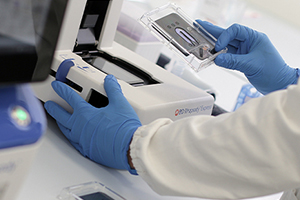
The Lipidomics/Metabolomics/Proteomics unit is equipped with the following instruments:
1) UHPLC-Q Exactive™ mass spectrometer with ESI source (Thermo Scientific), is suited to untargeted or targeted screening with high-confidence confirmation but is equally capable of a broad range of qualitative and quantitative applications. Resolution of 140,000 at m/z 200 and <1ppm of mass accuracy. Mass range 50-6000 m/z. Used for: [/av_textblock] [/av_one_half] [av_one_half min_height='' vertical_alignment='' space='' custom_margin='' margin='0px' padding='0px' border='' border_color='' radius='0px' background_color='' src='' background_position='top left' background_repeat='no-repeat' animation='' mobile_breaking='' mobile_display=''] [av_image src='https://www.irpcds.org/wp-content/uploads/2018/05/Omics.jpg' attachment='10220' attachment_size='full' align='center' styling='' hover='' link='' target='' caption='' font_size='' appearance='' overlay_opacity='0.4' overlay_color='#000000' overlay_text_color='#ffffff' animation='no-animation' admin_preview_bg=''][/av_image] [/av_one_half] [av_one_full first min_height='' vertical_alignment='' space='' custom_margin='' margin='0px' padding='0px' border='' border_color='' radius='0px' background_color='' src='' background_position='top left' background_repeat='no-repeat' animation='' mobile_breaking='' mobile_display=''] [av_textblock size='' font_color='' color='' av-medium-font-size='' av-small-font-size='' av-mini-font-size='' admin_preview_bg='']
- Large scale lipid and metabolomic profiling of complex samples
- Qualitative proteomics application
- Quantitative determination of hydrophobic vitamins (A, E, D3, K1)
2) 5973 inert GC-MS (Agilent), GC coupled to a single quadrupole, both electronic impact and chemical ionisation mode. Quantitative analysis of small organic molecules. Mass range: 1.6-800 Da. Used for the quantitative analysis of:
- Fatty acid
- Organic acid
- Aminoacid
3) GC coupled to two high-resolution magnetic sectors (IRMS, Thermo Scientific) with electronic impact ionization source. IRMS instrument is used to measure precisely small differences in the abundances of isotopes such as 13C/12C, 2H/1H and 18O/16O, even at the same time, of organic molecules (fatty acid, organic acid and amino acid). Used for study of:
- Kinetics
- Drug delivery
- Provenance
- Adulteration
4) GC with FID detector for quantitative determination of small known molecules. Used to quantitate:
- Fatty Acid
- Organic Acid
- Amino Acid
5) Triple-quadrupole API4000 (AbSciex), with ESI and APCI sources. Quantitative analysis of known compounds. The compounds that can be analyzed are medium / high polarity molecules and sizes between 100-1500 Da. Instrumental sensitivity at ppb levels. Currently the tool is used for:
- tryptophan and metabolites dosage in samples of biological fluids and tissue;
- dosage of intermediates of lipid metabolism and cholesterol in cell and plasma samples;
- pharmacokinetics / biodistributions in animal models (plasma and tissues);
- protein dosage in LC-MRM
Ideally, the instrument can be used to dose any compound that possesses the characteristics described above.
6) qTOF XEVO-G2-XS (Waters), with ESI source. Instrument suitable for qualitative analysis (identification of unknown compounds) and quantity of known compounds. The compounds that can be analyzed are medium / high polarity molecules and sizes between 100-1500 Da. It is possible to analyze intact proteins of medium / small size and digested proteins. Instrumental sensitivity to ppb / ppt levels (dependent compound). Currently the tool is used for:
- Identification of the proteins that make up the extracellular matrix
- profiling of lipids in plasma and cells
- study of molecular complexes in samples of natural origin
It can be used for high productivity proteomics (high sensitivity and acquisition speed) and metabolomics, with appropriate modifications in the hardware and software.
For more information please contact: dr. Manuela Simonato m.simonato@irpcds.org
[/av_one_full]

